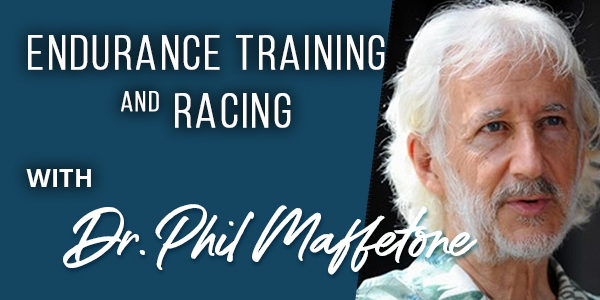
If you put training ahead of your health or other areas of your life, it may be time to assess whether you have a positive addiction or deceptive disorder.
Are you preoccupied with working out? If you miss a day, or more, are there withdrawal symptoms such as not feeling right, a bit depressed or physically off?
Do you still train if you’re hurt, sick, or squeeze workouts in during lunch or sacrifice sleep time for it? Does exercise interfere with personal relationships, work or social responsibilities?
If some of these factors are part of your life you could have an addiction known as exercise dependence.
Too much of a good thing is not a new concept. The ancient Greek physician Hippocrates first said that everything in excess is opposed to nature. The term “exercise dependence” describes people who continue exercising beyond healthy limits.
The academic discussion of excessive physical activity often focuses on obsessive and compulsive exercising. Researchers say the most appropriate term for this phenomenon is exercise addiction, emphasizing that excessive physical exercise fits the typical and most common characteristics of behavioral addictions. Other terms have also been used such as exercise abuse and compulsive exercise. Mild, less defined, functional versions of exercise dependence would be much more common. Regardless of the names and where one falls on the spectrum, an exercise disorder can contribute to or be considered part of the overtraining syndrome.
A behavioral addiction is potentially observed in anyone working out, from competitive athletes on all levels who are driven to improve performances, to casual exercisers driven to lose weight or improve body image. In many cases, these individuals may also demonstrate another common clinical problem previously discussed: disordered eating. If the “drive” to work out becomes an overdrive, the brain’s HPA axis (hypothalamic-pituitary-
The concept of exercise dependence first appeared in the medical journals following the running boom of the 1970s, which soon included walkers, cyclists, triathletes and others. The risk of exercise dependency increases when individuals follow the guise of “more is better” (aka “no-pain, no-gain”).
While some research estimates rates of exercise dependence are very high with others showing it’s very low, depending on the types of exercisers and specific definitions, rates for competitive endurance athletes may range between 25 and 50 percent.
In 1976, psychiatrist William Glasser’s book Positive Addiction became a hit, in particular with many runners who could relate to being addicted to their sport. However, Glasser was not writing about the potential for exercise dependency. He defined “positive addiction” as something non-competitive, easy to do, performed alone most times, and that the activity must be done without self-criticism. This was not a common profile of many athletes during this period, and even today.
Other researchers would not accept “addiction” as being associated with something positive, arguing that the symptoms of addiction should only be applied to unhealthy exercise behavior. This would involve workouts leading to frequent and sometimes serious injuries. Not just knees and ankles, but hearts and heads too. The stress of training and racing, for example, can sometimes lead to depression and anxiety. Heart attacks are also not uncommon in athletes and those who exercise.
Writing in the journal Mayo Clinic Proceedings (Exercising for Health and Longevity vs. Peak Performance: Different Regimens for Different Goals, September 2014), authors O’Keefe, Franklin and Lavie state that,“‘Cardiac overuse injury’ is the term we have suggested for this increasingly common consequence of the ‘more exercise is better’ strategy.” They highlight various studies that basically infer many athletes are fit but unhealthy. Distance runners for example, demonstrated increased risk of atrial fibrillation, high levels of coronary artery plaque, and the common report of heart attacks during races. In some cases, those who train at higher volumes and intensities are at even higher risk than sedentary individuals.
It’s clear that exercise can significantly contribute to better physical, biochemical and mental-emotional health. However, this is not true of either extreme — a sedentary lifestyle or overtraining.
How much of a good thing can turn bad? Of course, it’s all about balancing both health and fitness, and recognizing imbalance in its earliest stages as a key to preventing it.
Through the years there have been many physiological and psychological theories about how one becomes addicted to exercise, but without consensus. One factor is certain — society and its influence on individuals plays a major role, in part by creating misconceptions about exercise (much like diet) encouraging negative behaviors.
When it comes to the health benefits of exercise, numerous studies emphasize a conservative approach to working out, especially if some high-intensity training is included in one’s routine. Some research points to a schedule of less than five hours a week as the safe upper range for long-term cardiovascular health and life expectancy, including two days off and to refrain from daily high-intensity exercise.
In the large and long-term Copenhagen City Heart Study (Journal of the American College of Cardiology, February 2015) it was shown that low and moderate intensity running had a lower mortality compared to that of sedentary people, but those training at high intensities had a mortality rate not statistically different from the sedentary group. The authors concluded that the benefits of running “are most robust for those who jog between 1 and 2.5 hours per week, at a slow to moderate pace, at a frequency of about two or three times per week.”
Does this mean we can’t train enough to develop our full athletic potentials? Certainly not. The real game at this high level of sports performance is determining the line of overreaching while avoiding crossing it to where there are negative consequences. This is a game too many competitive athletes lose as indicated by physical, biochemical and mental-emotional injuries.
It’s possible to train for optimal competition in a healthy way without the excesses. This is accomplished by building the aerobic system through moderating volume, balancing intensity, eating well and managing stress. In short, an unhealthy body won’t tolerate higher volumes and/or intensities.
In the case of professional athletes, many can push the envelope more because these individuals literally make training and recovery their focus, their “job.” In addition they often are able to obtain better nutritional and training support, massage therapy, and other care, thereby better adapting to the stresses of training and fine tuning their physical bodies. (This can certainly be accomplished by any individual if lifestyle factors and healthcare support are incorporated successfully, but many recreational athletes still have professional careers and families to attend to.)
If you feel like you are exercise-dependent, like your training is interfering with your health and your life, it may be time to take a step back and assess what is truly going on. Is your training really helping you improve, or is it making you sick and injured? Is it taking too much time or energy away from other important activities?
It’s almost black and white: Lifestyle either promotes health or it doesn’t. Physical activity either furthers fitness while improving health, or not. The details sometimes become fuzzy and we have to figure those out. Second-guessing our motives because we read or hear about other approaches, like the latest diet or workout craze, can easily get us off course.








